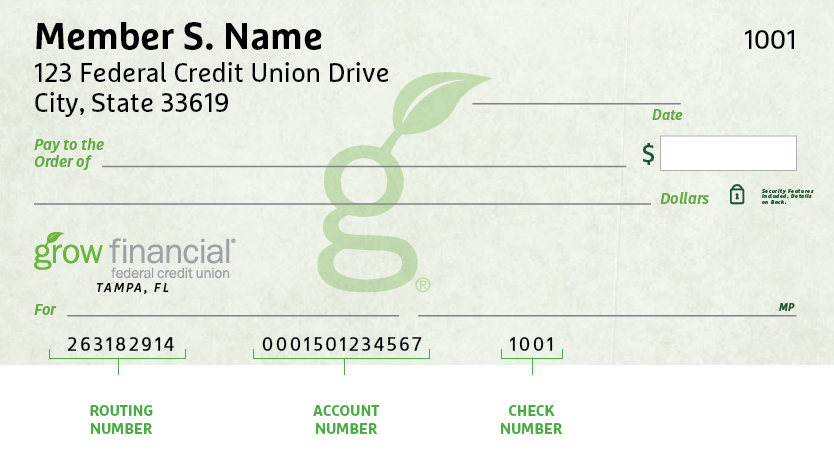- Personal
- Membership
- Membership
- Rates & Fees
- Checking
- Checking
- Personal Loans
- Personal Loans
- Wealth Management
- Investment Services
- Financial Advisors
- Resource Center
- Business

March 14, 2025
Ready to Own Your Home? Six Steps to Buying a Home
Buying a home is serious work. It’s not like you can just walk into a store and pick one off the shelf. The process is involved, and there’s no express lane. But you can save yourself a lot of headaches, hassles, money and time by doing your homework before you go looking for a home. The homebuying process can be broken down into six primary steps — from preparing your finances to closing.
1. Prepare your finances.
Start by saving up for the down payment and closing costs. The amount you need will vary depending on the type of mortgage and the purchase price of the home, but usually, you’ll need at least $5,000 to $10,000 to cover a down payment, upfront fees and closing costs. While you’re saving, make sure to watch your credit score. A better score gets you a lower rate on your loan, and that can save you thousands over time. Working to improve your credit? Learn more about getting your credit ready for a mortgage.
Have you looked at your credit report lately? You’re entitled to one free copy of your credit report yearly from each of the three major credit bureaus at AnnualCreditReport.com.
2. Get preapproved for financing.
The next important step to buying a home is getting preapproved for financing. There a many different types of mortgages. Finding out how much financing you qualify for will inform your budget during your home search. You’ll want to get pre-approved for financing before viewing homes, especially in a competitive housing market where things can move quickly. Not sure where to start? Our Real Estate Loan Officers can help you find out how much financing you qualify for and explain your home loan options.
3. Find a real estate agent and go house hunting.
When choosing a real estate agent to help you along your homebuying journey, seek recommendations from friends and read reviews online to identify local agents near you. We recommend interviewing a few people before choosing someone you can trust to represent your interests. You’ll be working with this person to make one of life’s most important purchases, so it’s important to find someone professional, honest and effective. Next? The fun part — checking out homes in person. Your real estate agent will guide you so you can find a home that’s a great fit.
4. Make an offer.
When you find a home you love, you’re ready to place an offer. That’s the time to be fair, level-headed and open with your real estate agent, who’ll handle the paperwork. You’ll review and sign the offer contract, then your real estate agent will submit the offer contract and handle communication with the seller’s real estate agent. Seller accepts? One more step before closing!
5. Have the home appraised and inspected.
Your lender will send an appraiser out to the home to ensure the price reflects its real market value before giving final approval on your financing. This keeps both the buyer and the lender safe from overpaying for a home.
You’ll also have the right to complete a home inspection during a specific period, commonly five to seven days, as agreed in your offer contract. Enlist the help of a reputable home inspector and thoroughly review the inspection results. You’ll never regret getting a home inspected, but many people have regretted skipping the inspection when they end up with surprise termites (or worse). Don’t skip the inspection!
6. Close on your new home!
The last step of buying a home takes place at the office of the title company. At closing, you’ll sign all the paperwork to finalize the sale. (Before you send money, make sure you know how to watch out for wire transfer fraud, an increasingly common scam facing homebuyers.) Depending on the complexity of the sale, you can typically expect to be at the title company for around an hour or two. Once you’ve signed on the dotted line, you’ll officially be a homeowner!
Ready to own your home?
When you’re ready to get started, our professional Real Estate Loan Officers are here to help. Contact us today to learn more about mortgage options at Grow.
Subject to credit approval.
Grow Financial mortgage loans are valid for the purchase or refinance of owner-occupied residential properties in the states of Florida, South Carolina, North Carolina, Georgia, Alabama and Tennessee including single-family detached, condominiums and townhomes. Not valid for the purchase of investment properties. Grow Financial mortgage loan rates are updated daily and available at growfinancial.org.
Posted In:
How to Find Your Routing & Account Numbers
When you make a payment online, by phone or on a mobile device, you may be asked for our routing number and your checking account number. Credit unions and banks use these numbers to identify accounts and make sure money gets where it’s supposed to be. You’ll also need to provide your routing and checking account numbers for:
- Direct deposits
- Electronic checks
- Military allotments
- Wire transfers
Where to Find Your Routing & Checking Account Numbers
Your personal checks include both our routing number and your account number, as shown on the Grow check example below.

Don’t have a Grow check? No worries.
Visit any Grow store and ask for a Direct Deposit Form. It lists both your routing number and checking account number.
Making a Loan Payment
Incorrect Phone Number Alert
We’ve identified an incorrect phone number listed in a letter sent to a select group of new members with auto loans. The incorrect number is NOT affiliated with Grow. Please be sure to use our official phone number, 800.839.6328, which you can verify on our Contact Information page. For your security, keep your personal information safe and avoid sharing it over the phone, email or text message. We will never ask you for your credit or debit card security code, expiration date or PIN, login security codes, or your online banking password.
When it comes to making payments, we try to make it as painless as possible to pay your loan every month. We have several different ways to pay, including convenient online options.
Pay Online
You have two ways to pay online by transferring funds from another bank or credit union.
- Grow Online Banking (Preferred payment method for any loan)
This is the simplest way to pay your loan. You can make one-time payments or set up automatic recurring payments in Grow Online Banking. Once you log in, select “Transfer/Payments” from the menu. If you’re not enrolled in Grow Online Banking yet, you can set up your account in just a few minutes.
Log In
- Debit Card or ACH (Available for auto, personal loans and HELOCs)
Note: ACH and debit card payments are not available for credit cards or most mortgages, except HELOCs.
We accept ACH payments with no additional fees, consumer Mastercard® and Visa® debit cards with a convenience fee of $4.95, or commercial Mastercard® and Visa® debit cards with a convenience fee of 2.95% of the payment amount. To get started with an online ACH or debit card payment, select Pay Now below.
Pay Now
Pay by Mail
You can also pay any Grow loan by check through the mail. Please remember to include your account number and Grow loan number on the check. (For credit card payments, please do not write your 16-digit credit card number on the check, which can cause a delay in processing the payment.)
Address for auto, credit card, personal loan and HELOC payments:
Grow Financial Federal Credit Union
P.O. Box 75466
Chicago, IL 60675-5466Address for personal first or second mortgages and home equity payments:
Grow Financial Federal Credit Union
P.O. Box 11733
Newark, NJ 07101-4733You Are About To Leave GrowFinancial.org
At certain places on this site, there are links to other websites. Grow Financial Federal Credit Union does not endorse, approve, represent, certify or control those external sites. The credit union does not guarantee the accuracy, completeness, efficacy, timeliness or accurate sequencing of the information contained on them. You will not be represented by Grow Financial Federal Credit Union if you enter into a transaction. Privacy and security policies may differ from those practiced by the credit union. Click CONTINUE if you wish to proceed.
